
Emergencies in the harsh environment of space require unique and rigorous protocols. As humanity extends its reach beyond Earth, the need for comprehensive emergency procedures becomes critical to protect the lives of astronauts and ensure the integrity of missions. Factors such as microgravity, the vacuum of space, and the distance from Earth dramatically influence how emergency situations must be managed. Whether it’s a medical event, a fire, or a critical system failure, astronauts and mission control centres on Earth must work in concert to resolve issues swiftly and effectively.
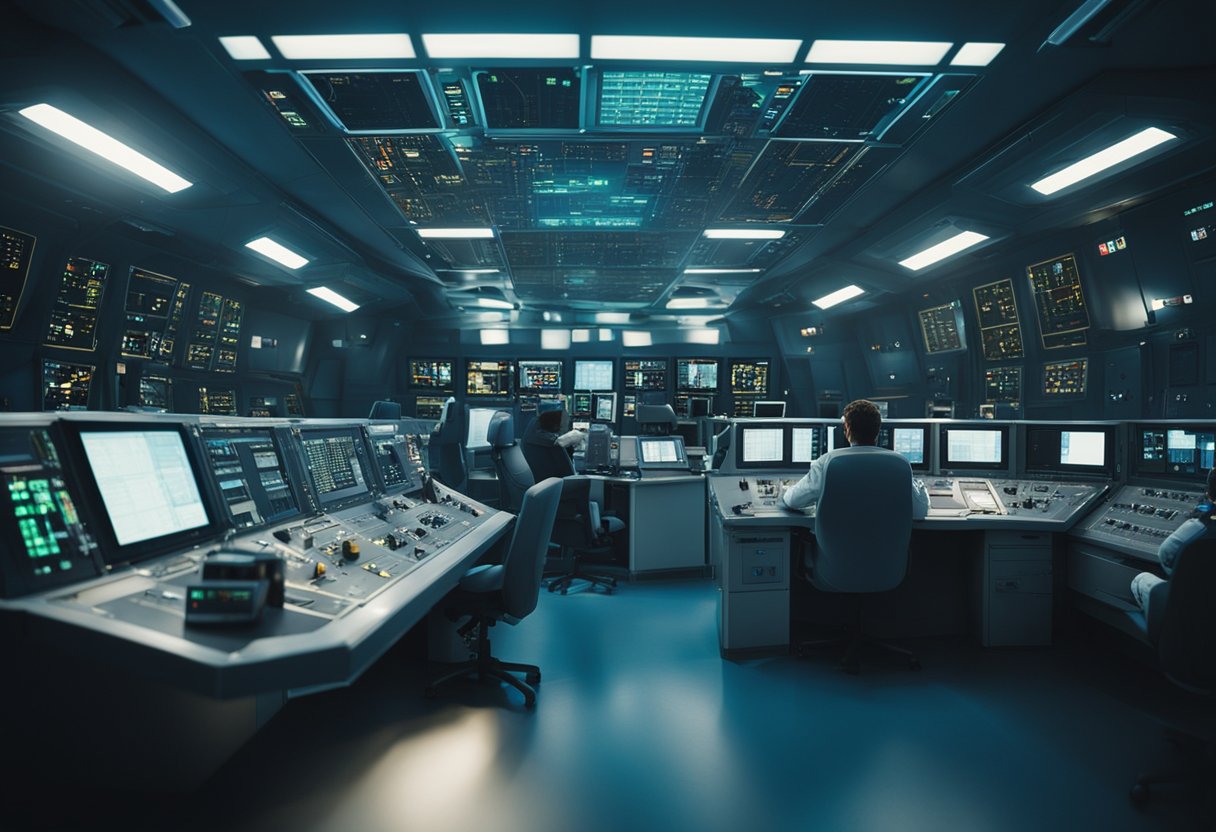
The design of spacecraft is heavily influenced by the necessity to anticipate and mitigate potential emergencies. Safety features are integral to the functionality of the craft, ensuring that astronauts have the tools and refuge needed in a crisis. In parallel, rigorous training prepares astronauts for a range of scenarios, equipping them with the skills to handle emergencies without immediate assistance from Earth. This training also encompasses emergency spacewalks and evacuation strategies, should the need arise. Through a detailed understanding of spacecraft systems and procedures, combined with constant communication with mission control, astronauts stand ready to tackle the unexpected.
When we consider the complexity of spaceflight, emergency procedures become a crucial aspect that ensures the safety of astronauts and the integrity of the spacecraft, including the International Space Station (ISS).
Medical Emergencies: In space, medical emergencies can be life-threatening due to the distance from Earth-based medical facilities. Our emergency protocols are designed to handle a range of medical issues, considering the limitation on medical equipment. Actuarial data suggests the risk of a medical event during spaceflight, demonstrating the importance of these procedures.
Environmental Hazards: Spacecrafts can encounter environmental hazards such as meteoroids or space debris, which can cause damage to their structure. Our emergency procedures outline immediate actions to manage potential breaches or loss of cabin pressure.
Mechanical or System Failures: Robust procedures exist to address mechanical, technical, or system failures aboard the spacecraft. These include redundant systems and a series of checks and protocols to detect and repair issues that may arise.
Fire in Space: Fire poses a unique danger in the microgravity environment. Specialised fire suppression systems and protocols are in place to handle potential fire outbreaks and ensure the safety of those on board.
Each emergency scenario has a tailored set of emergency procedures, which astronauts are thoroughly trained to execute. Our priority is to preserve human life, maintain the operability of the spacecraft, and ensure a safe return to Earth if required.
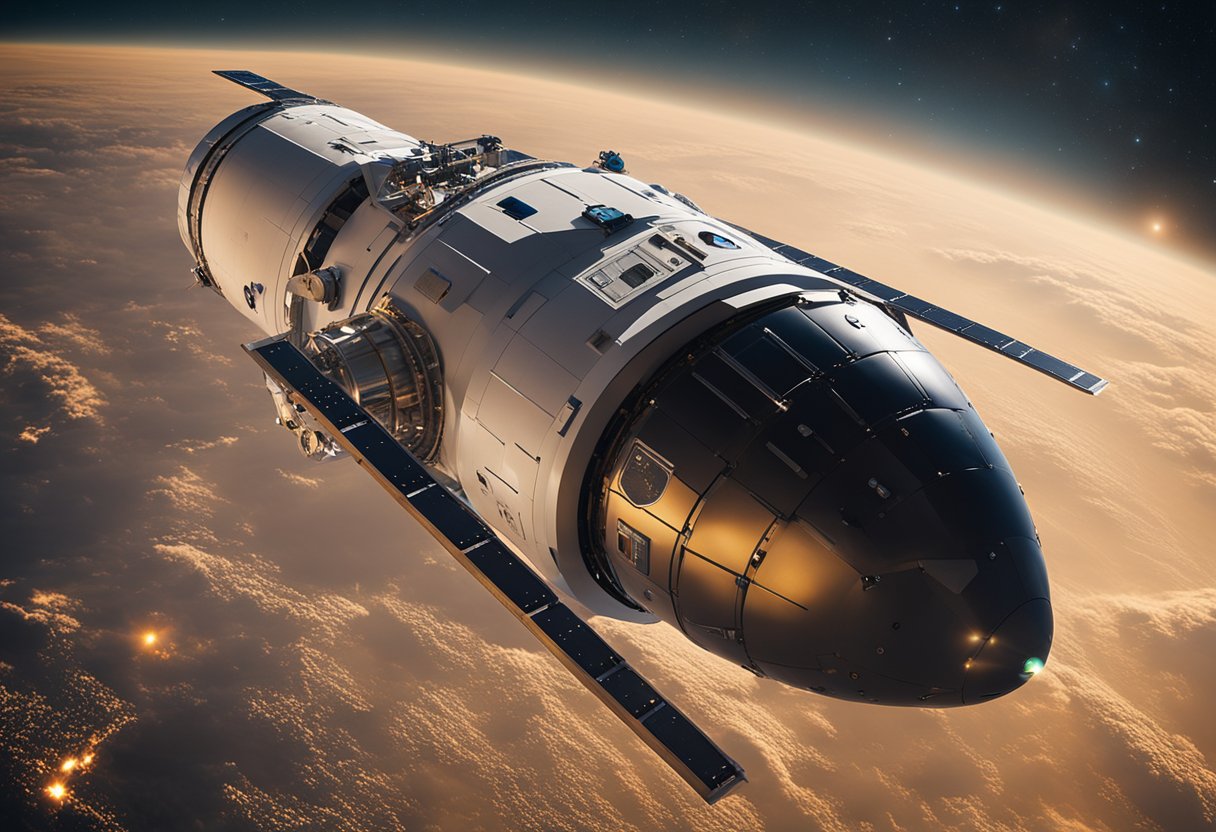
In our focus on spacecraft design, we ensure that both automatic safety systems and manual override functions are seamlessly integrated to bolster the safety of our spacecraft. These features are critical in mitigating risks during space missions and preserving the lives of the crew and integrity of the spacecraft.
We incorporate various automatic safety systems into our spacecraft design to respond to potential emergencies with minimal human intervention. These systems are crucial, as they can react faster than humans to unfolding events. For example, should a fuel imbalance be detected, fuel management systems will autonomously adjust valves to correct the flow, ensuring the stability of the spacecraft.
Our electronics also play a pivotal role in these systems. They continuously monitor the status of the spacecraft’s subsystems, automatically initiating emergency protocols if necessary to protect both the crew and the craft. This may include sealing sections, engaging fire suppression systems, or activating radiation shielding.
While we trust our automatic systems, we also provide manual override functions. This ensures that the crew retains ultimate control over the spacecraft’s safety systems. For instance, if an automatic system fails or is not optimal for a unique situation, the astronauts can manually actuate valves or control fuel flow to rectify the situation.
Furthermore, the capsule’s design includes manual controls for essential functions, allowing the crew to navigate or operate the spacecraft independently of automated systems, should the need arise. This redundancy is central to our approach to safety, guaranteeing that our crew can always respond to and manage emergencies directly.
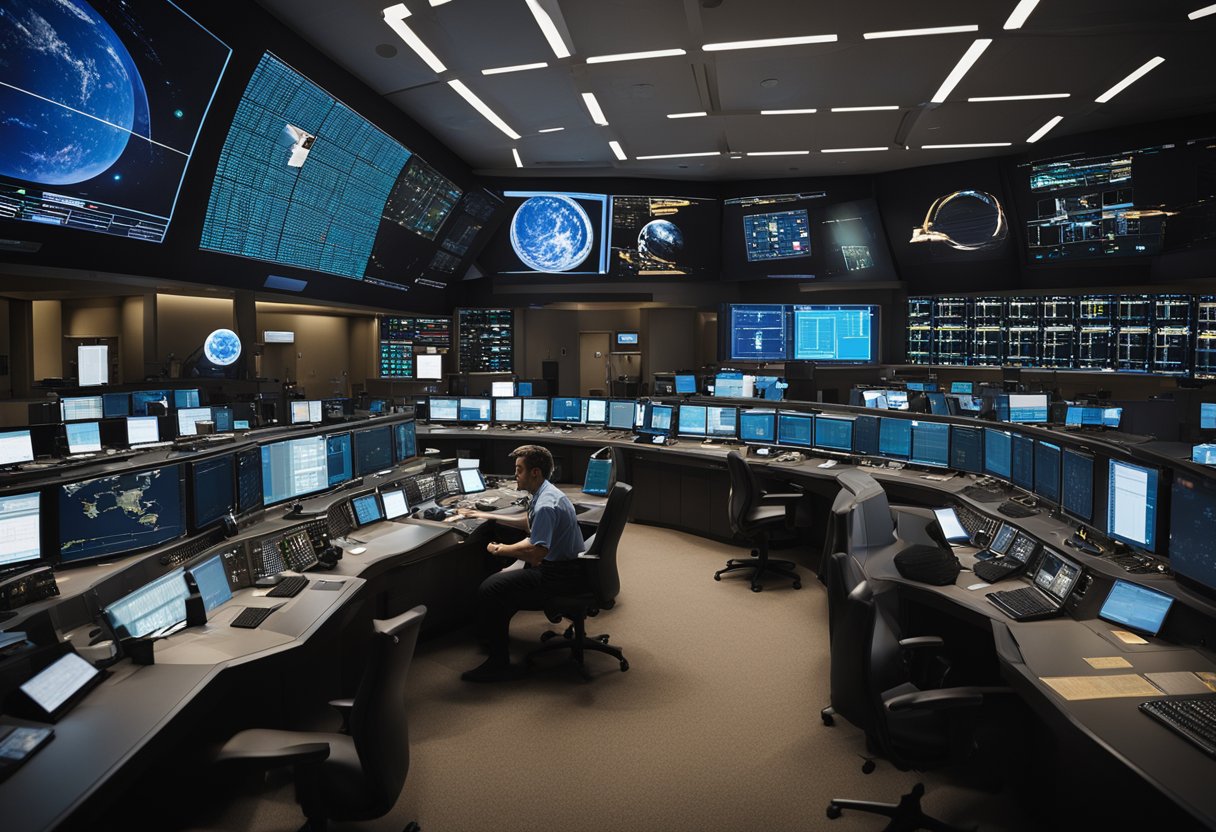
In the realm of space exploration, Mission Control serves as the nerve centre, charged with the crucial tasks of ensuring astronauts’ safety and the success of the mission. By continuously monitoring spacecraft systems and providing decisive support, these teams on the ground are indispensable to space endeavours.
Our teams at Mission Control centres, such as the ones operated by NASA and SpaceX, maintain vigilant real-time monitoring of missions. This oversight encompasses a vast array of components including environmental health within the spacecraft, thermal control subsystems, and life support parameters. For instance, during the Artemis I mission, even without astronauts on board, the Emergency, Environmental, and Consumables Officer (EECOM) persistently oversaw the environmental control and life support systems, showcasing the importance of constant vigilance.
In addition to continuous surveillance, we provide remote support and guidance to manage any contingencies that may arise during the mission. Our expertise embodies detailed risk management protocols that are critical when facing unforeseen incidents. Given that crewed spacecraft are complex environments, support also extends to direct guidance for astronauts to troubleshoot and resolve emergencies. This coordination ensures that all actions are informed and deliberate, reflecting a commitment to the preservation of both crew welfare and mission integrity. For collaborative missions, as during integrated operations with the International Space Station, the flight director bears the ultimate responsibility for the vehicle’s safety, consolidating insights from various teams to steer the mission towards success.
We must ensure our astronauts are equipped to handle any situation they might face during their missions. Rigorous training and thorough preparation are vital components of mission readiness.
Simulation drills are fundamental to our astronaut training program. Astronauts regularly engage in sessions that recreate spaceflight conditions, enabling them to practice procedures and respond to various emergency scenarios. The Artemis II crew, for instance, has been involved in intensive preparations, practising exits from the Orion spacecraft in an emergency. These simulations not only prepare them for the technical aspects of space travel but also help build resilience and teamwork, which are just as crucial.
Types of Simulations:
Every astronaut is given comprehensive space medicine training, which includes certification in advanced life support, to manage any medical emergencies in space. Given that the nearest hospital could quite literally be hundreds of miles away, it’s essential that they can rely on one another for life-saving interventions. A flight surgeon is often part of the team, offering specialised guidance and assistance in the development of these training programs.
Key Medical Training Components:
Our training and preparedness regimens are continually refined to incorporate the latest insights in space travel and medicine. This foresight positions us at the leading edge of safety standards, not just for current astronauts but also for participants in future endeavours like those documented on SpaceVoyageVentures.com.
When conducting a spacewalk, or extravehicular activity (EVA), astronauts are trained to handle an array of contingencies. Two of the most critical are spacesuit malfunctions and depressurisation incidents, each demanding a set of established protocols to ensure astronaut safety within the challenging environment of microgravity.
Spacesuits are designed to serve as personal spacecraft, providing life support and protection in the vacuum of space. In the event of a suit malfunction such as a tear or a loss of pressure, astronauts follow a specific procedure. This often includes immediately reporting to the crew inside the spacecraft, who will then guide the spacewalker back to the safety of the airlock. For instance, when a suit was compromised by a water leak during a spacewalk, swift actions and clear protocols helped avert a potential disaster.
Actions to take:
Depressurisation may occur in a spacecraft or within the space station. In a microgravity environment, responding to rapid loss of pressure requires calm and methodical actions. The first step is for the spacewalker to seek refuge in the spacecraft or the International Space Station’s (ISS) airlock. Astronauts practise these emergency drills to ensure every crew member knows their role during such critical incidents.
Depressurisation response steps:
By maintaining rigorous training programmes and emergency preparedness, we can enhance the safety of all spacewalkers, whether they are seasoned astronauts or future participants in space tourism ventures, like those being envisioned by SpaceVoyageVentures.com.
When addressing a fire in space, it’s critical that we implement advanced fire suppression systems and adhere to strict evacuation protocols. In the absence of gravity, fire behaves differently, creating a spherical shape and potentially becoming a more significant hazard due to the closed environment and limited resources.
We have designed our fire suppression systems to deal with the unique challenges presented by the microgravity environment of space. In such an environment, where flames can envelop materials in all directions, conventional methods like water sprays are not as effective.
In the event of a fire that cannot be contained or controlled, evacuation is our ultimate safety measure.
Keeping these systems and protocols up to date and properly maintained is crucial for the safety of everyone aboard. We take pride in our efforts to ensure a safe and prepared environment for our current missions and future space tourism activities, as documented on SpaceVoyageVentures.com.
In space, the absence of immediate professional medical intervention necessitates a robust response system for medical emergencies. We must rely on comprehensive in-capsule care and sophisticated portable medical devices.
Astronauts are trained in emergency procedures and the use of compact medical kits, ensuring that they can handle initial care in the event of a medical crisis. Our in-capsule medical capabilities include life support systems, basic surgical tools, and medications necessary to stabilise a patient. Crew members are proficient in providing cardiopulmonary resuscitation (CPR), wound care, and managing potential allergic reactions or infections.
Technological advancements have led to the development of portable medical devices, like the portable ultrasound, vital for diagnosing conditions in microgravity. These devices are specifically adapted for use in a confined and weightless environment, allowing us to assess injuries and monitor vital signs. Data from the ultrasound can be transmitted in real-time to medical experts on Earth for consultation, facilitating a coordinated response between the crew and ground control.
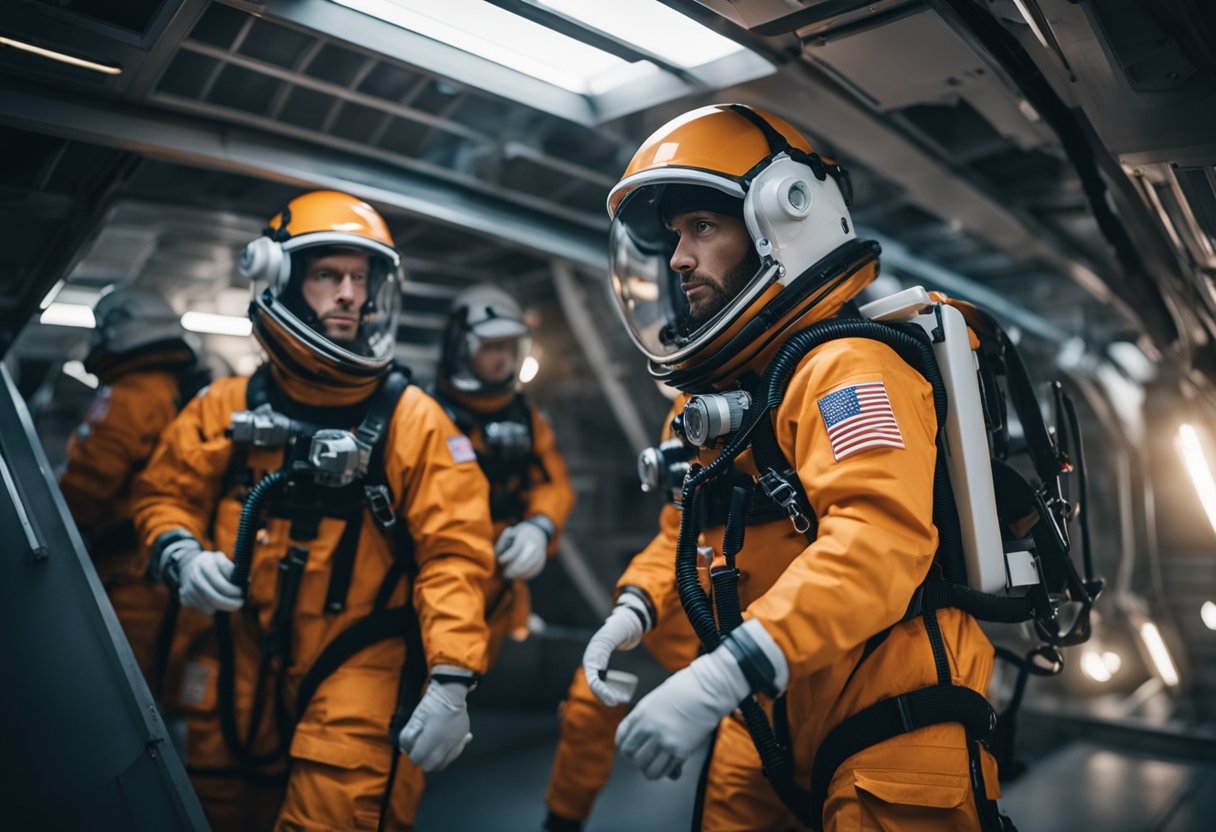
In addressing confined space rescue operations, it’s imperative that we outline the coordination required for an effective rescue team as well as specialised rescue techniques that can be employed during such missions.
For a successful confined space rescue, the precision and readiness of the rescue team are paramount. We ensure that confined space entry procedures are rigorously followed and that every member of our rescue team is adept in handling potential hazards. Rescue plans are crafted with the utmost care, detailing each step of the intervention. Rescue drills are conducted regularly, simulating various scenarios to prepare our team for actual emergencies. Coordination involves continuous, clear communication channels and predefined roles within the team, which are essential to manoeuvre within the time-sensitive nature of these operations.
Specialised rescue techniques are refined through extensive training and application in actual confined space rescues. Each technique is designed to adapt to various factors, such as toxic air environments or physically restrictive spaces. To extract individuals safely, we use equipment such as atmospheric monitors and ventilators as part of the rescue procedure, ensuring both victim and rescue team’s protection against hazardous atmospheres. Our confined space rescue team is also trained in advanced rigging and lifting procedures for extricating incapacitated personnel with care. Such precision reflects our commitment to safety and efficiency in responding to critical incidents within confined spaces.
When considering spacecraft evacuation, the strategies vary based on the immediacy and type of the situation at hand. These strategies are meticulously designed for optimum astronaut safety.
In a time-sensitive scenario, such as an imminent collision or critical system failure, swift action is crucial. Rescue operations must be carried out with precision and urgency. For example, the International Space Station emergency plans would be initiated where astronauts quickly manoeuvre to their assigned Soyuz or Crew Dragon spacecraft, which serve as lifeboats. The process from alarm to liftoff is rehearsed rigorously to ensure all crew members can evacuate within minutes, reflecting the essence of a time-sensitive rescue aimed at preserving life and ensuring the safety of the crew.
Contrastingly, non-time-sensitive evacuations are planned operations. These are typically methodical and may involve a transition to a safe haven or a return to Earth planned over days or weeks due to less immediate concerns, like health issues or non-life-threatening technical problems. For instance, if SpaceVoyageVentures.com documented a commercial space trip with a scheduled end, comprehensive exit strategies would be in place, allowing tourists and crew to return safely. These procedures would include pre-departure health checks, equipment checks, and a detailed timeline for returning to Earth to guarantee no detail is overlooked in non-time-sensitive rescues.
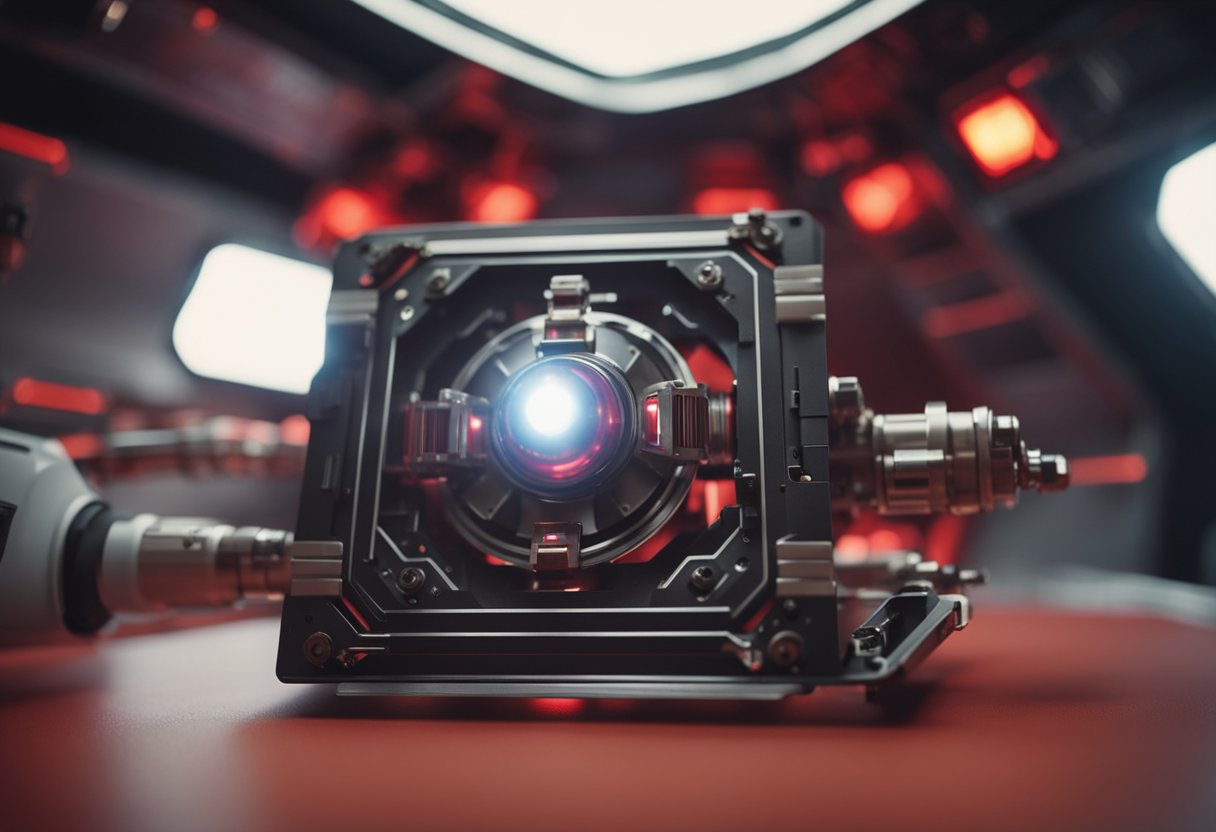
Upon resolution of an in-space emergency, we immediately initiate post-emergency procedures to ensure the continued well-being of the crew and the integrity of the mission. At the crux of these processes are psychological support for the crew and a thorough post-incident analysis.
Post-emergency, we prioritise the mental health of our astronauts. A flight surgeon, skilled in aerospace medicine, provides continuous support, addressing any psychological repercussions the incident might have inflicted. It’s vital for us to maintain an open line of communication with the crew, fostering trust and ensuring they feel supported during recovery.
After every incident, our team conducts a rigorous post-incident analysis. We meticulously examine the emergency procedures followed, assess any risk management practices implemented, and look for areas of improvement. Data collected during emergencies are crucial for refining protocols and enhancing safety measures for future missions.
As we develop plans for potential space tourism through initiatives like SpaceVoyageVentures.com, the insights garnered from these analyses will be instrumental in crafting experiences that are not only thrilling but also supremely safe.
In this section, we detail the critical initiatives enabling coordinated efforts for emergency procedures in space, involving pivotal entities like the International Space Station and NASA, and how standardisation plays a vital role in ensuring safety across agencies.
We recognise the substantial impact of collective endeavours in space exploration. A resonant example is the partnership between American entities such as NASA and private companies like SpaceX, which are instrumental in advancing the capabilities of the International Space Station. They work collaboratively to provide emergency support, such as the provision of rescue spacecraft like the Soyuz, which is capable of safely returning crew members to Earth in case of an emergency.
International cooperation extends beyond immediate emergency responses, as shown by the Multilateral Coordination Board (MCB), which brings together space agencies from 15 countries to synergise policies and operations on the ISS.
Our commitment to enhancing safety protocols is reflected in our push for standardisation. Clear and universally recognised procedures are essential, exemplified by the formation of the Spacecraft Emergency Cross Support Working Group (SECWG). This body delineates standard procedures for managing spacecraft emergencies, aiming for consistency in actions taken during critical situations, which can involve anything from major system malfunctions to collision avoidance.
Space agencies and stakeholders concur on the importance of such standardisation. It is a unifying force that has even inspired the drafting of voluntary agreements such as Memorandums of Understanding (MoUs) to bind different nations in cooperative pursuance of space safety and risk management. With space tourism on the horizon, sites like SpaceVoyageVentures.com serve as testament to the broader applicability of these emergency protocols, ensuring safety as commercial space travel edges closer to reality.
In our continued efforts, we join forces across international borders and corporate thresholds, developing and refining protocols that could one day serve not just astronauts but also tourists seeking the wonders of space.
We have compiled a selection of the most commonly asked questions about emergency procedures on the International Space Station (ISS) to provide clarity and insight into how astronauts prepare for and address potential issues in orbit.
In the event of a power failure, we utilise redundancy systems on the ISS that include multiple electrical power system strings to ensure no single failure can cause a loss of power. Astronauts are rigorously trained to perform quick diagnostics and can switch to backup power systems as necessary.
Water is the most recycled resource aboard the ISS. We achieve this through a sophisticated Water Recovery System that processes and purifies both the moisture from the air and the astronauts’ urine, effectively turning yesterday’s coffee into today’s drinking water.
Astronauts are trained to handle a broad range of emergencies including, but not limited to, fire outbreaks, sudden depressurisations, medical issues, and toxic chemical leaks. This involves both individual skills and team coordination.
The critical steps in emergency protocols usually involve immediate threat identification, communication with mission control, and execution of practiced procedures for the specific emergency type—be it sealing off affected modules or preparing for a potential evacuation.
Yes, there have been medical emergencies in space, such as the instance where a blood clot was treated by a remote medical consultation, guiding a fellow astronaut to perform the required ultrasound and administer medication to resolve the issue.
Upon identifying an emergency, crew members don immediate protection gear, secure the ISS modules, and use their extensive training to take appropriate actions tailored to the specific nature of the incident, whether that means repairing a system or preparing for evacuation.